Simple Wedding Tips: Stress-Free Planning for Your Big Day
Planning a wedding doesn’t have to be stressful or complicated. With a focus on simplicity, you can craft a day that feels both special and intimate without the frills or fuss. The key is to prioritize what truly matters to you and your partner.
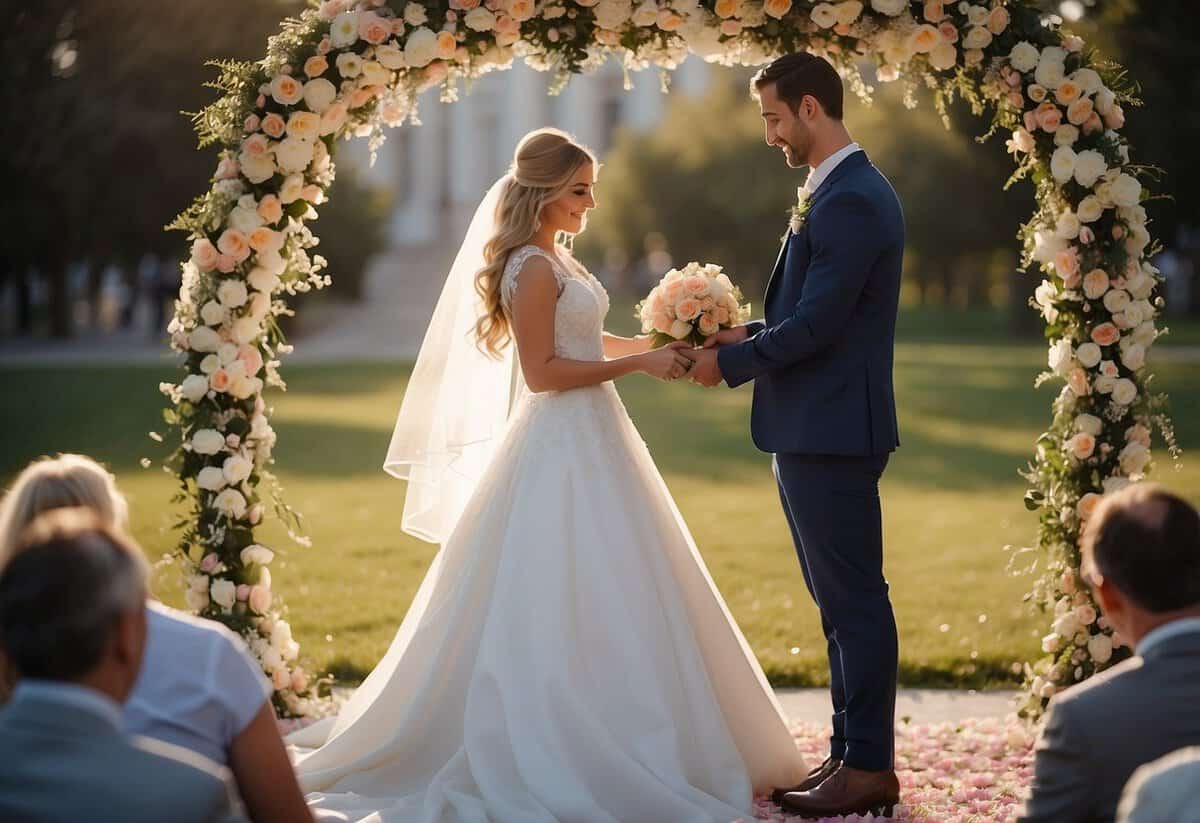
Whether you envision a cozy gathering with close family and friends or an elegant but understated celebration, simple wedding tips can help you make it happen. By making thoughtful choices and embracing a minimalist approach, your wedding can be both beautiful and memorable.
1) Delegate tasks to friends

Planning a wedding can be overwhelming, but you don’t have to do it all alone. Get your friends involved by asking them to handle different tasks.
For example, ask someone to manage the RSVPs. This can save you a lot of time.
Another task to delegate is wrapping the wedding favors. It’s a simple job that can be fun when done with friends.
You can also have friends help with stuffing and stamping envelopes. Put on some good music and make it a party.
If you have younger guests, let them do a ceremony reading. It’s a great way to include them in the festivities.
Lastly, consider asking a friend to handle the cleanup. It’s a big help and allows you to enjoy your special day stress-free.
2) Create a Detailed Timeline

Creating a detailed timeline for your wedding day is essential. This timeline helps everything run smoothly and reduces stress. Start early and plan from the moment you wake up to the last event of the night.
Break your day into small time slots. Write down what needs to happen and when. Include time for hair, makeup, getting dressed, photos, and travel.
Remember to leave extra time for unexpected delays. This way, you won’t feel rushed if something doesn’t go as planned. Also, be sure to coordinate with your vendors. Make sure they know the schedule and any changes.
Share your timeline with your bridal party and family. This helps everyone stay on the same page. Sticking to the timeline will help you enjoy your day more!
3) Choose a Theme First
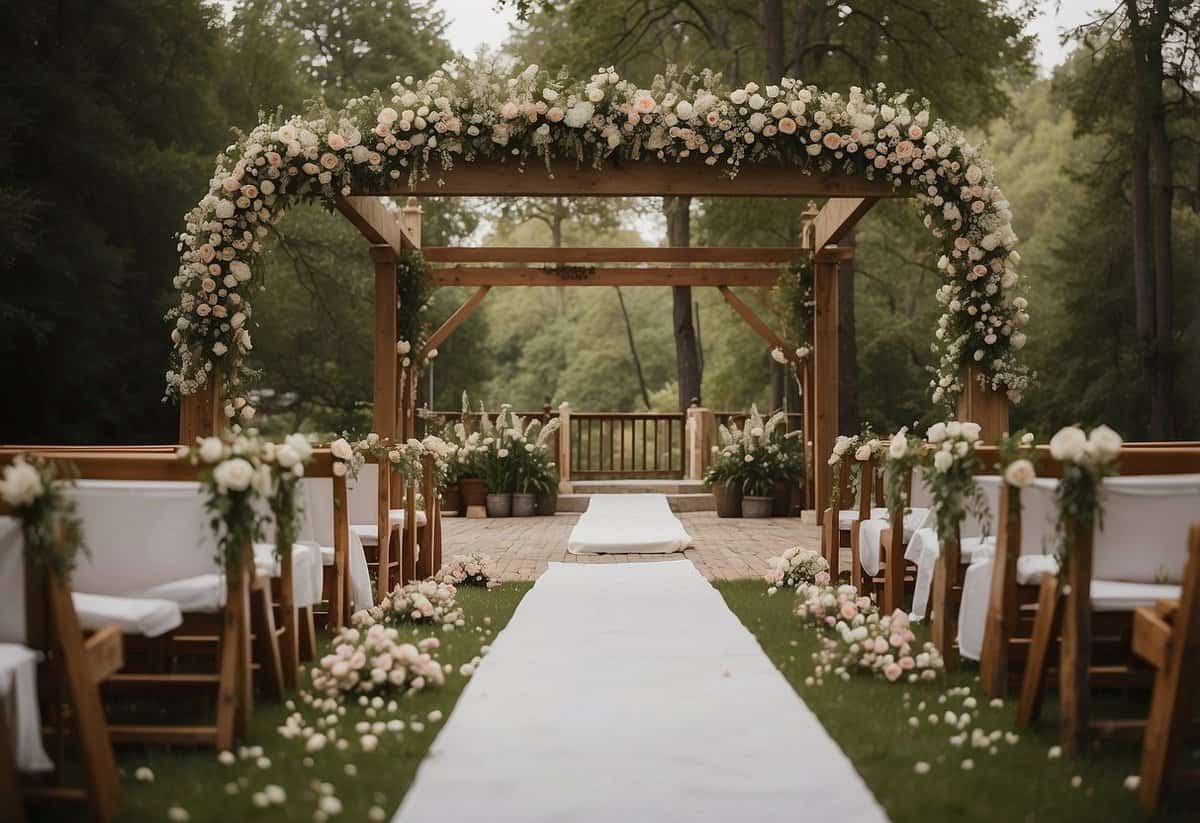
Choosing a wedding theme can make planning smoother. It helps you decide on decorations, attire, and even the venue. A clear theme will make your big day feel cohesive and special.
Themes can be simple or elaborate. You might choose a rustic look with wood and lace or a beach theme with sand and seashells. Think about what you both love.
Once you pick a theme, stick to it. This consistency adds charm and makes everything look put together. It also makes decisions easier since you’ll have a guiding idea for all the details.
4) Consider a Weekday Wedding

Choosing a weekday for your wedding can save you a lot of money. Venues and vendors often offer discounts on weekdays since weekends are more popular.
Your dream vendors may be more available on weekdays. Photographers, caterers, and florists might be easier to book.
Keep in mind that weekday weddings might need to end earlier. Guests could have work the next day. A shorter schedule can keep things simple and still fun.
5) DIY your invitations

Creating your own wedding invitations can be a fun and personal touch. Using customizable templates, you can design something that fits your style.
Print your invitations at home or use a service like Vistaprint. Look for designs with plenty of white space and lighter colors for easy printing.
Add unique details like vellum jackets or hand-painted elements. These small touches can make your invites look professional without spending a lot.
6) Rent your attire
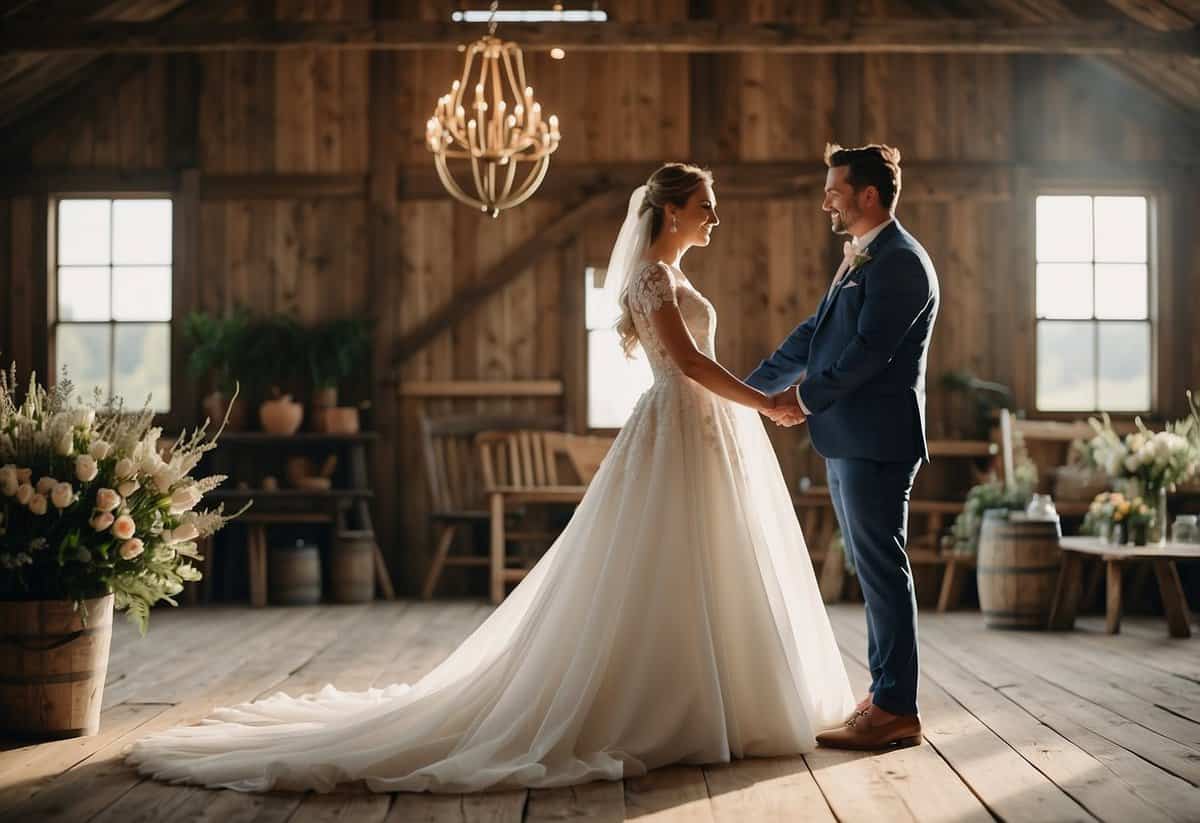
Renting your wedding attire can save you a lot of money. Instead of spending a fortune on a dress or suit you’ll wear once, you can rent a stunning outfit for a fraction of the cost.
There are many services where you can rent wedding dresses and suits. Websites like FashionPass offer a variety of styles and sizes to suit your needs.
Renting is also a great way to stay trendy. Many rental services update their collections regularly, so you can pick from the latest fashion without breaking the bank.
Don’t forget to read reviews before choosing a rental company. This can help you avoid any surprises and ensure you get a great outfit for your special day.
7) Opt for seasonal flowers
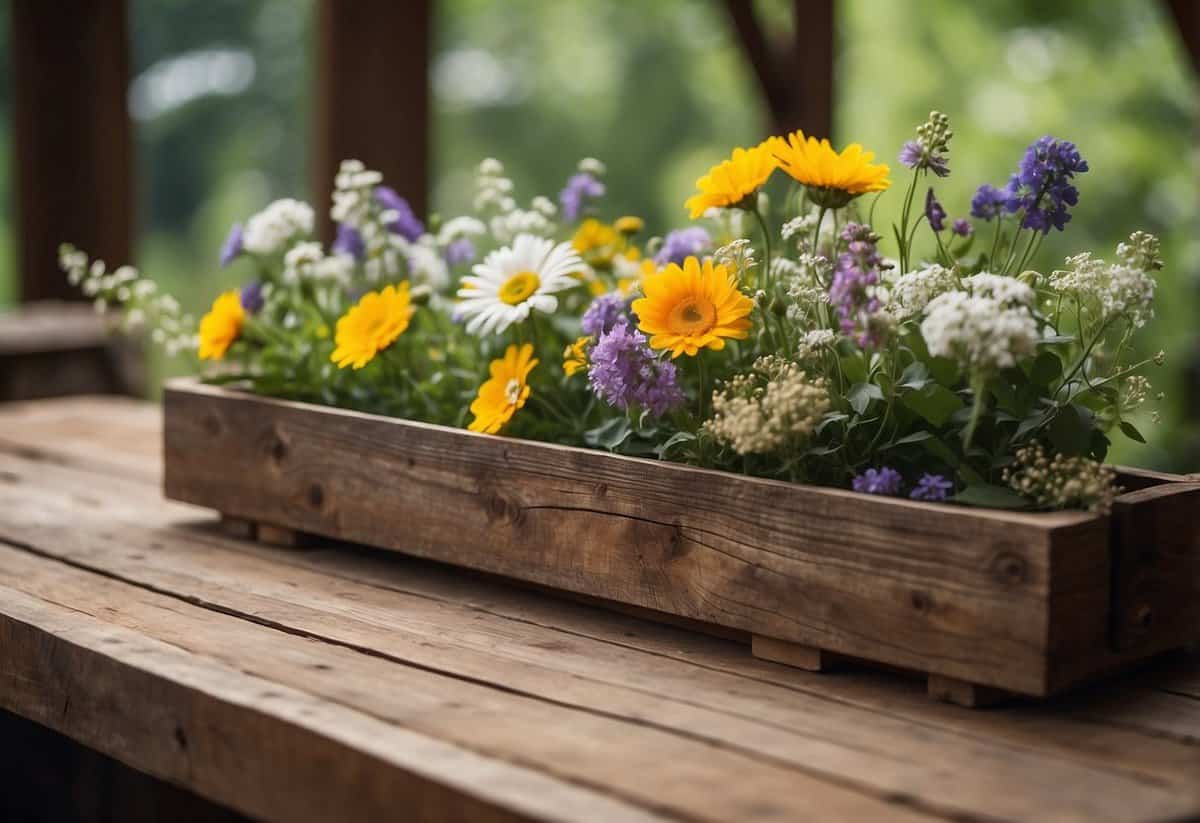
Choosing seasonal flowers for your wedding can save you money and add charm. Flowers in season are more affordable because they’re abundant and don’t need to be imported.
Seasonal flowers are also fresher and look more vibrant. They fit the natural setting of your wedding and enhance its beauty.
In spring, consider lilies of the valley or poppies. For a summer wedding, sweet peas and irises are great choices. By sticking to what’s in season, you’re not only making a smart choice but also a beautiful one.
8) Use digital RSVPs
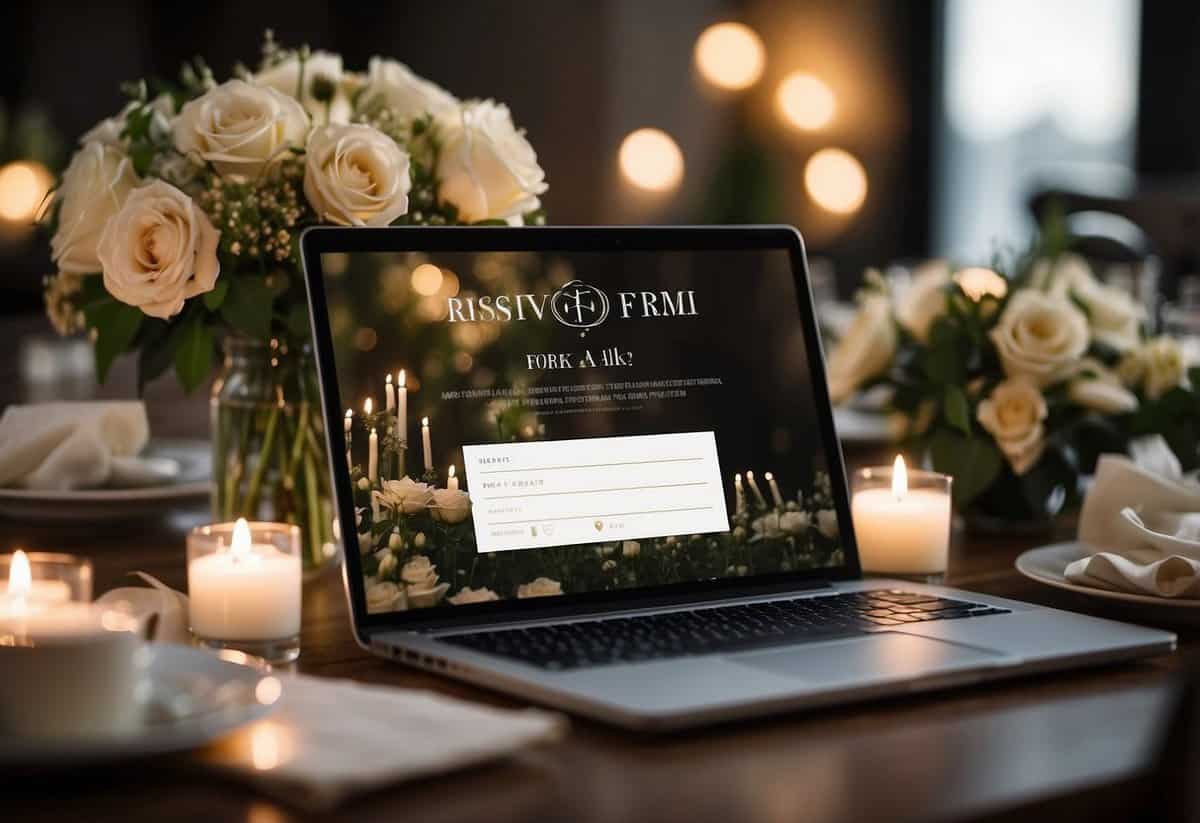
Digital RSVPs simplify the process for both you and your guests. Instead of mailing back response cards, guests can RSVP with just a few clicks.
Create a customized RSVP form on your wedding website. This can help you easily track responses and any special requests.
Send out e-invitations or traditional invites with a link to your RSVP form. This ensures everyone can access it easily.
Use a platform like RSVPify or Zola. These tools offer features like personalized responses and free trials.
In summary, digital RSVPs save time, reduce costs, and make managing your guest list easier.
9) Make a budget spreadsheet

It’s important to keep track of all your wedding expenses. A budget spreadsheet can help you do this effectively.
Start by listing every category, from venue and catering to flowers and photography. Include an estimated amount for each.
Use a program like Microsoft Excel or Google Sheets. These programs allow you to easily update and adjust your budget.
Keep an eye on actual expenses versus your estimates. This helps you stay under budget and avoid any surprises.
A budget spreadsheet can also help you visualize where most of your money is going. You can create charts and graphs to see this clearly.
Including a section for unexpected costs is also a good idea. This way, you’re prepared for any last-minute changes or needs.
Remember, staying organized makes planning your special day less stressful!
10) Simplify Your Menu
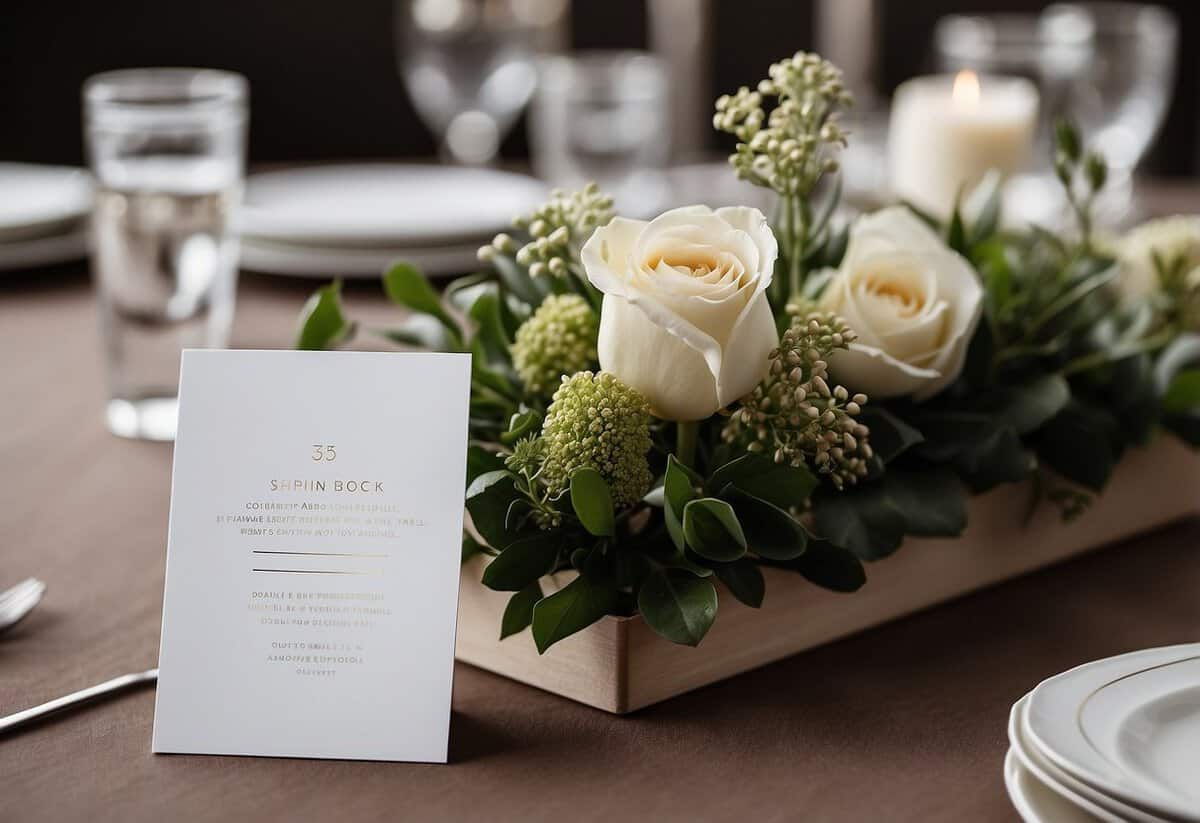
Choose a few high-quality dishes instead of a long list of options. This keeps things easier for your caterer and your guests.
Incorporate fresh, seasonal ingredients. They taste better and are often more affordable.
Offer a couple of versatile appetizers, like fruit skewers or veggie platters. These are light and enjoyed by most people.
For the main course, think about comfort foods that can be easily prepared in large quantities. A pasta dish or a hearty salad can be a hit.
Finally, don’t forget about dietary needs. A simple vegan or gluten-free option ensures everyone has something tasty to enjoy.
Planning Your Wedding Timeline
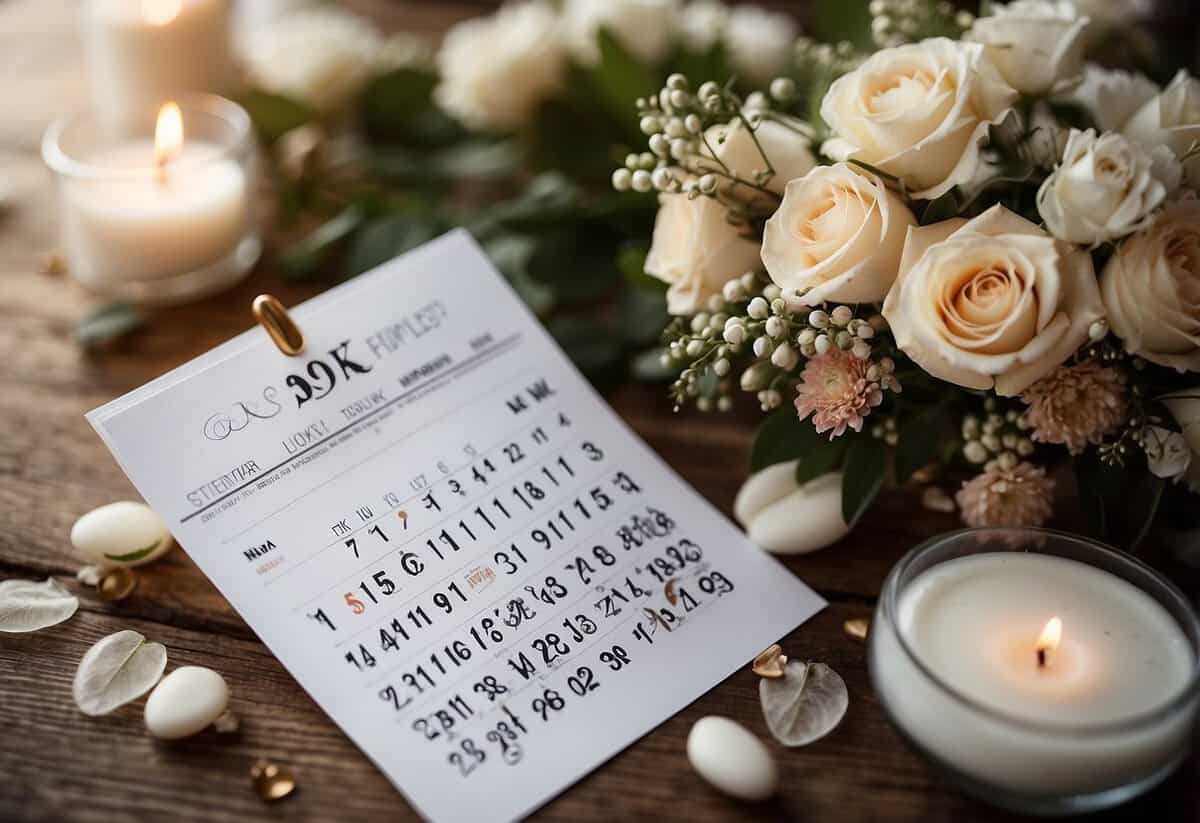
To make sure your wedding day runs smoothly, you need to prioritize important dates and coordinate with your vendors effectively. This will help you avoid last-minute rush and stress on your special day.
Prioritizing Key Dates
Start by setting the date for your wedding. Pick a day that works best for you, your partner, and close family. Once you’ve set the date, work backwards to plan other important events.
- Engagement Party: This can be held shortly after your engagement announcement.
- Dress Fittings: Schedule dress fittings a few months before the wedding.
- Invitations: Send out invitations about two to three months ahead.
- Rehearsal Dinner: Plan this for the night before the wedding.
Remember to consider holidays and travel times, as these can affect your guests’ availability.
Coordinating With Vendors
It’s crucial to coordinate closely with your vendors. Once you’ve chosen your key vendors—like your caterer, photographer, and florist—clear communication is key.
- Meet Early: Meet with each vendor asap to discuss your vision and requirements.
- Contracts: Always review and sign contracts that detail all services.
- Timeline Sharing: Share your wedding day timeline with vendors to ensure everyone knows their roles and timing.
- Confirm Details: Confirm every small detail as your wedding day approaches to avoid any misunderstandings.
Regular check-ins with your vendors will keep everyone aligned and prevent last-minute issues.
Simplifying Wedding Décor
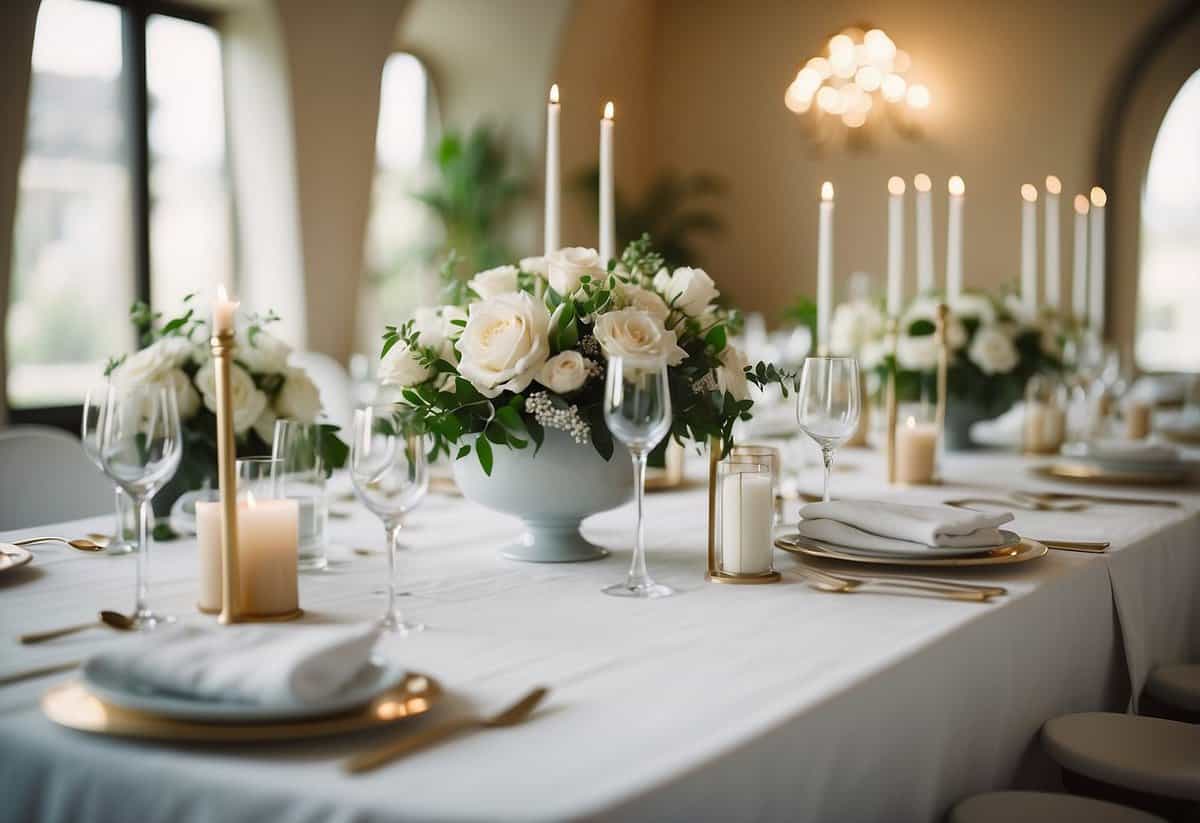
Creating a simple wedding décor can make your special day elegant and stress-free. Focus on picking a consistent theme and incorporating minimalist decorations to keep things clean and chic.
Choosing a Theme
Picking a theme sets the tone for your wedding. A popular choice for simple weddings is minimalism. This theme uses less clutter and more open space, focusing on meaningful details.
Another option is the rustic theme, featuring natural elements like wood and green foliage. This theme provides a relaxed and cozy vibe.
Beach themes are also simple, utilizing the natural beauty of the ocean and sand. Choose neutral colors and simple details.
Themes help you stay focused and guide your decoration choices, ensuring everything fits together seamlessly.
Minimalist Decorations
For a minimalist setup, use items that serve both function and beauty. White and black color schemes are classic choices.
Consider single-stem flowers in simple vases, like Calla lilies, to avoid overcomplicating centerpieces.
Floating backdrops provide an elegant background with minimal effort.
Use clean lines and geometric shapes in your signage and stationery. Black satin ribbons can provide contrast without overwhelming the decorations, adding a hint of elegance to boutonnieres or napkins.
Keep things simple and let each element stand out on its own, contributing to a cohesive and serene atmosphere.
Stress-Free Guest Management
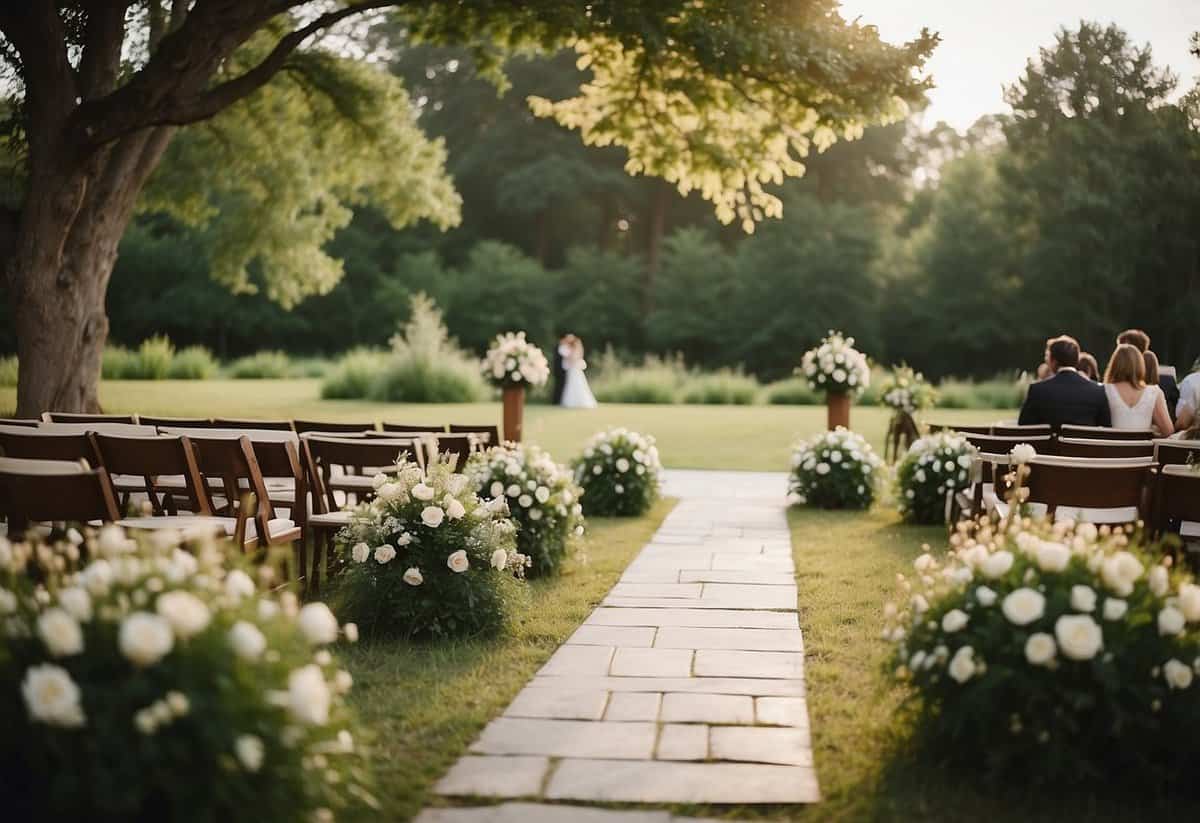
Managing your wedding guests can be challenging, but it doesn’t have to be overwhelming. By creating an organized guest list and effectively managing RSVPs, you can ensure a smoother planning process.
Creating a Guest List
Start by jotting down everyone you want to invite. This list will go through a few rounds of revision. Begin with close family and friends, then move on to acquaintances and coworkers.
Break your list into categories: must-invite and nice-to-invite. This can help prioritize guests if you need to trim the list later. Don’t forget to consider budget and venue capacity when finalizing.
Using spreadsheet software can be helpful. Create columns for names, addresses, and contact details. This makes it easy to keep track of everyone, especially for sending out invites and thank-you notes.
Managing RSVPs
Once your invites are out, managing RSVPs becomes crucial. Set an RSVP deadline to give you enough time to finalize arrangements with vendors. Typically, 3-4 weeks before the wedding date works well.
Use a combination of digital and physical RSVP options. Online RSVPs can be more convenient for many guests, while traditional mail might be preferred by older relatives.
Organize responses in your guest list spreadsheet. Mark who has responded and their meal choices if applicable. This keeps everything in one place and ensures you’re not missing any important details. Remember to follow up with guests who haven’t responded a week before the deadline.







